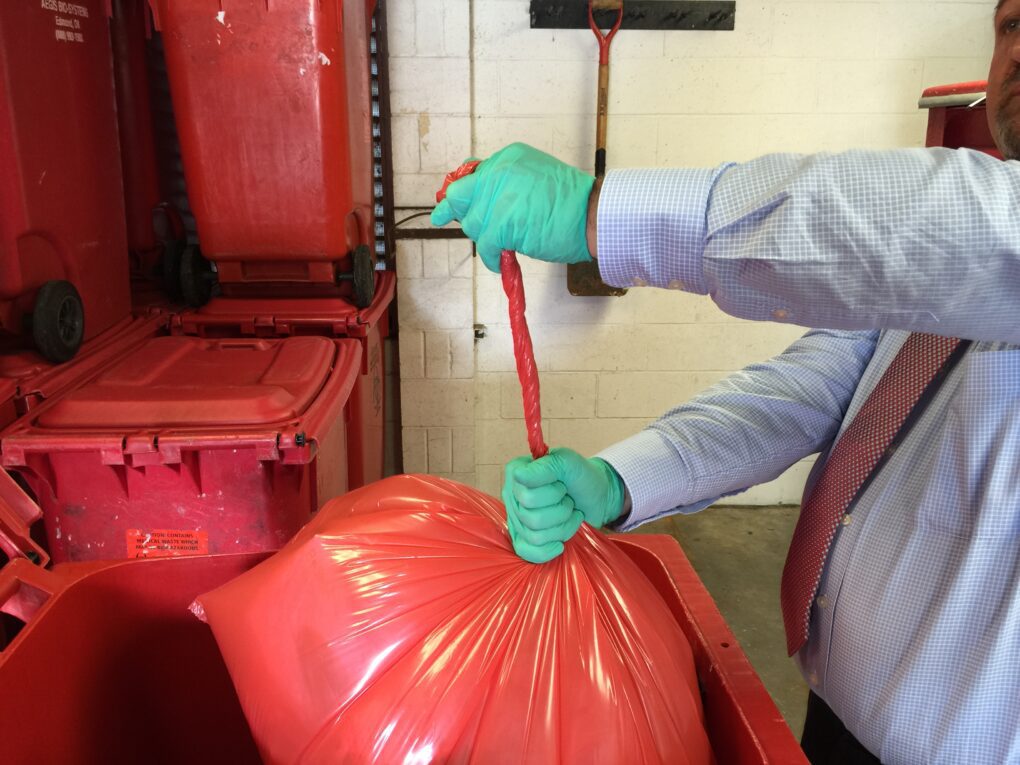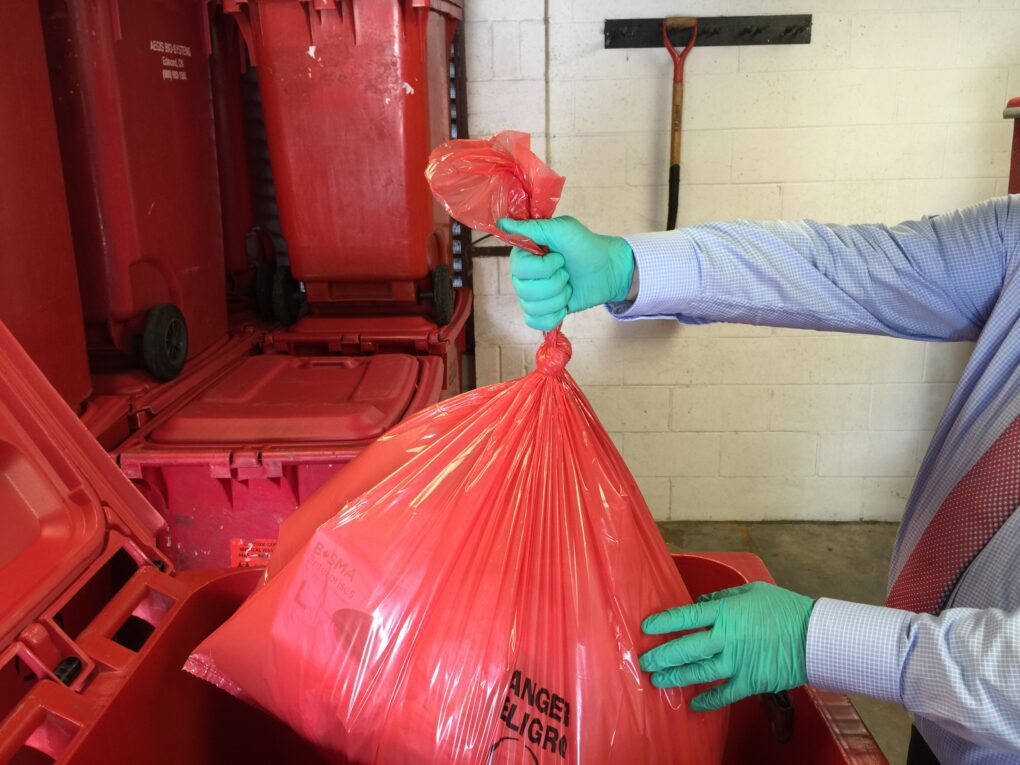Why Proper Medical Waste Containers and Packaging Matter: The Front Line of Safety in Regulated Medical Waste Management
In the world of regulated medical waste (RMW), safety, compliance, and efficiency all start at the same place: medical waste containers and packaging. While much attention is paid to treatment technologies and disposal methods, it’s the container choices and medical waste packaging practices that often determine whether a facility stays compliant—or faces risk.
At Advant-Edge Solutions of Middle Atlantic, Inc., we’ve seen firsthand how proper containers and packaging plays a critical role in ensuring worker safety, regulatory compliance, and environmental protection. Whether you’re managing sharps, trace chemotherapy, or pharmaceutical waste, getting the packaging right is essential.

Why Are Proper Medical Waste Containers and Packaging So Important?
- Regulatory Compliance
Federal and state regulations (including US DOT, OSHA, and state health departments) require specific medical waste container types, labeling, and closure practices. Failing to follow these requirements can result in citations or fines. Proper packaging ensures that your facility meets transport and handling standards from the moment the waste leaves your hands. - Worker and Public Safety
Improperly sealed containers, overfilled sharps bins, or non-compliant packaging can expose staff and transporters to serious hazards. Puncture-resistant, leak-proof, and correctly labeled containers reduce the risk of needlestick injuries, spills, and contamination incidents. - Waste Stream Integrity
Improper packaging can blur the lines between different waste streams. For example, placing pharmaceutical blister packs or contaminated packaging inside a medication-only container can render the contents unrecoverable and out of compliance. Accurate segregation begins with disciplined packaging. - Treatment Efficiency
Facilities like ours that utilize ozone or other advanced processing methods rely on proper medical waste packaging to ensure efficient treatment. Overpacked, contaminated, or non-compliant containers can delay processing and increase handling time—raising both environmental and operational costs. - Liability Protection
Generators of RMW remain legally responsible for their waste “from cradle to grave.” Proper packaging, labeling, and documentation help mitigate liability and demonstrate due diligence should an issue arise downstream.
Best Practices We Recommend
- Use only DOT-approved containers for transportable regulated medical waste (RMW).
- Never overfill sharps containers—2/3 full is a common safety threshold.
- Ensure that liners are tied securely and that lids are fastened properly.
- Label every container with generator information and barcodes where required.
- Train staff regularly on packaging protocols, especially if waste streams change.


A Partnership for Safety and Compliance
ASMAI provides all of our clients with compliant medical waste containers, labeling, and support materials—and we review packaging practices during routine site visits. Our compliance portal also offers training resources and plan templates to help meet regulatory expectations.
Proper medical waste packaging isn’t just a box to check—it’s the foundation of safe and responsible waste management. If your facility needs a review of packaging procedures or would like a packaging audit, our team is ready to help.
Need help with packaging compliance?
Contact ASMAI at (302) 533-6858 or service@asiwaste.com to schedule a compliance check or training session.
